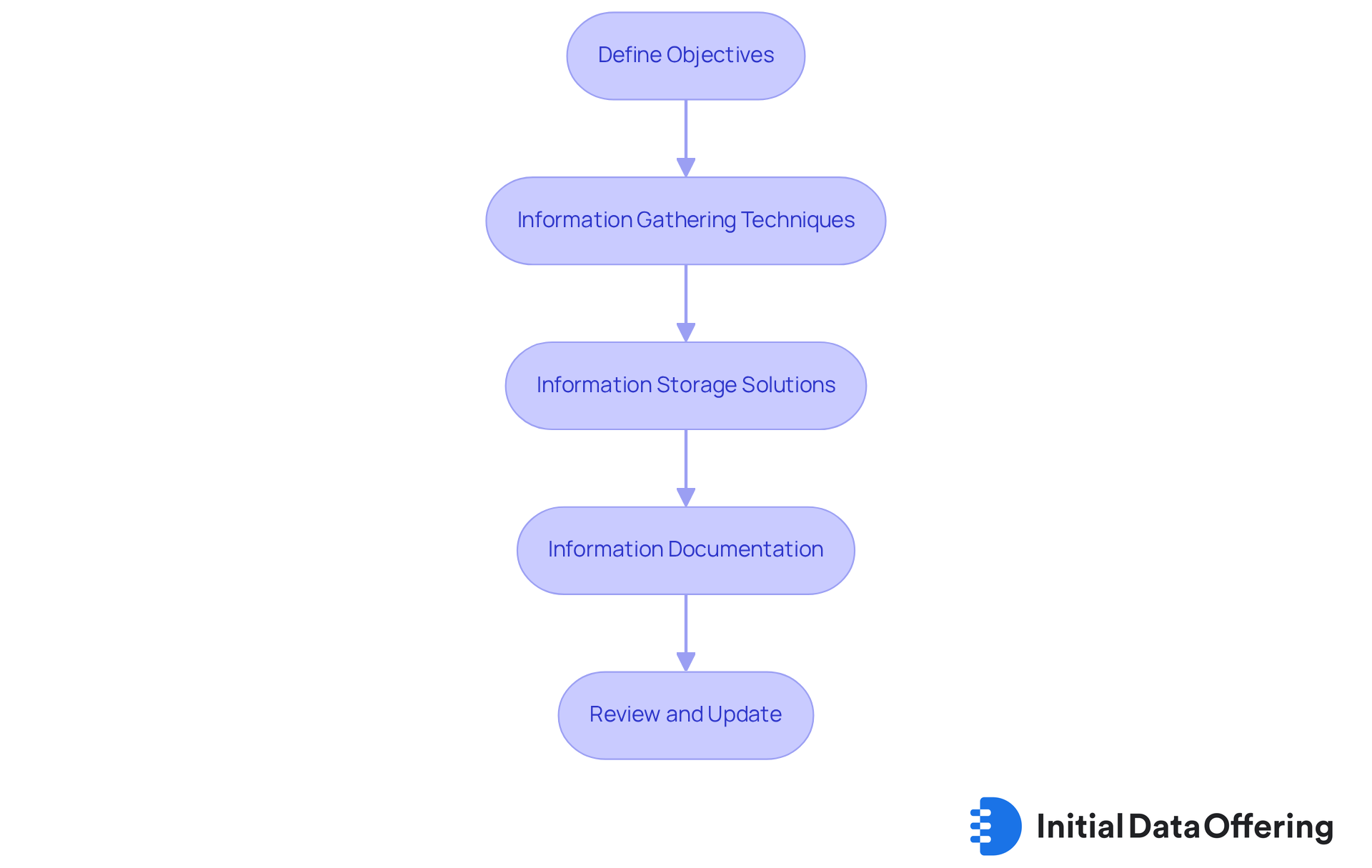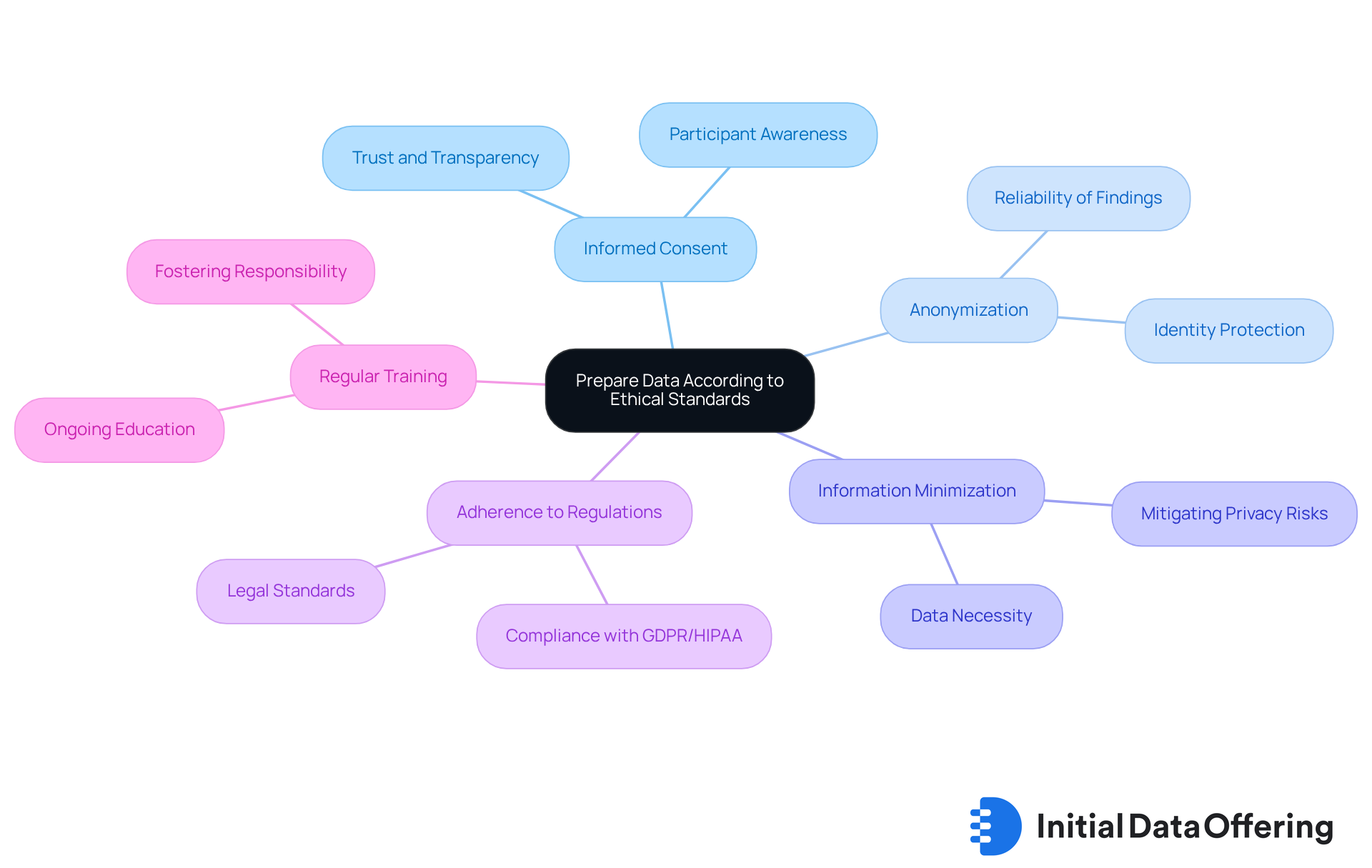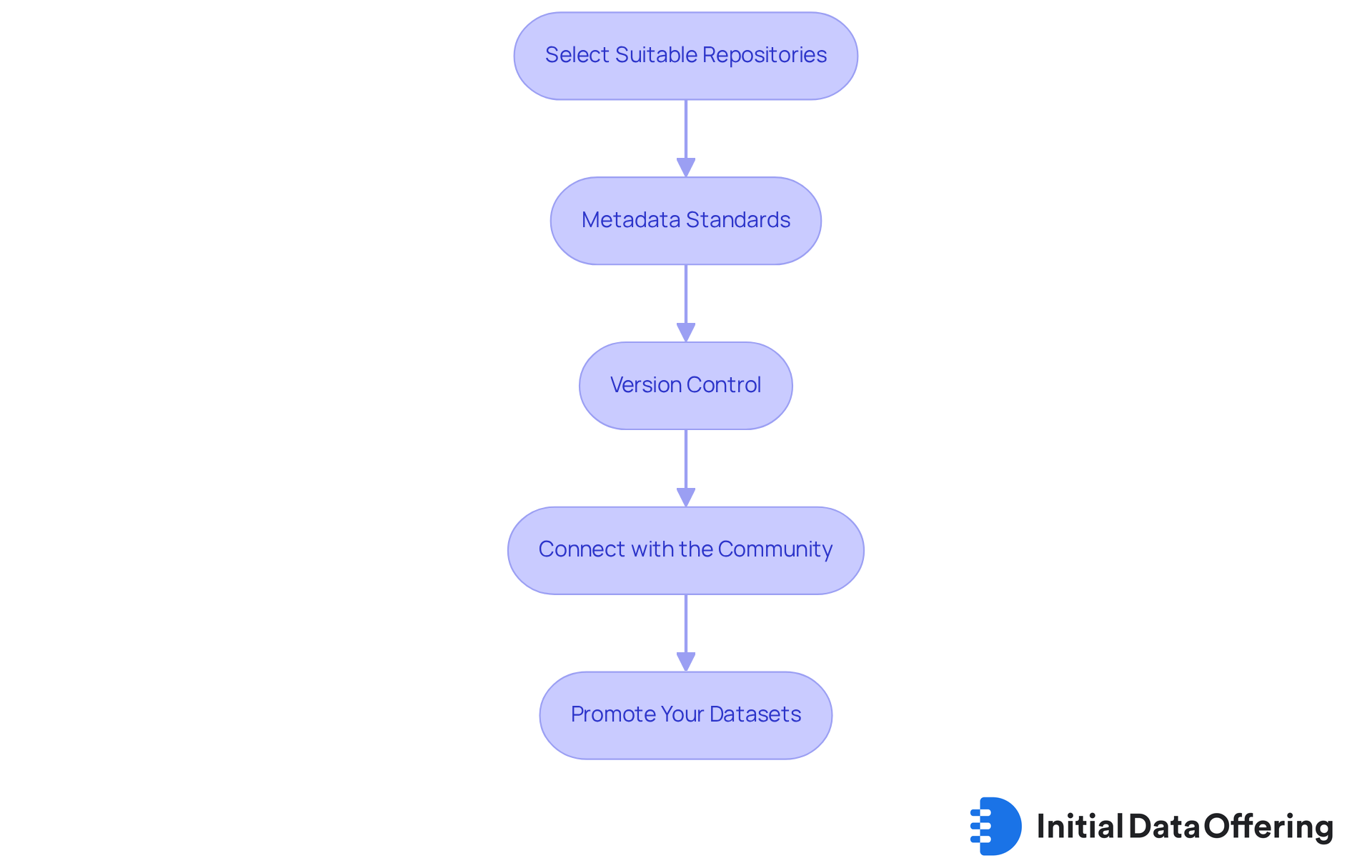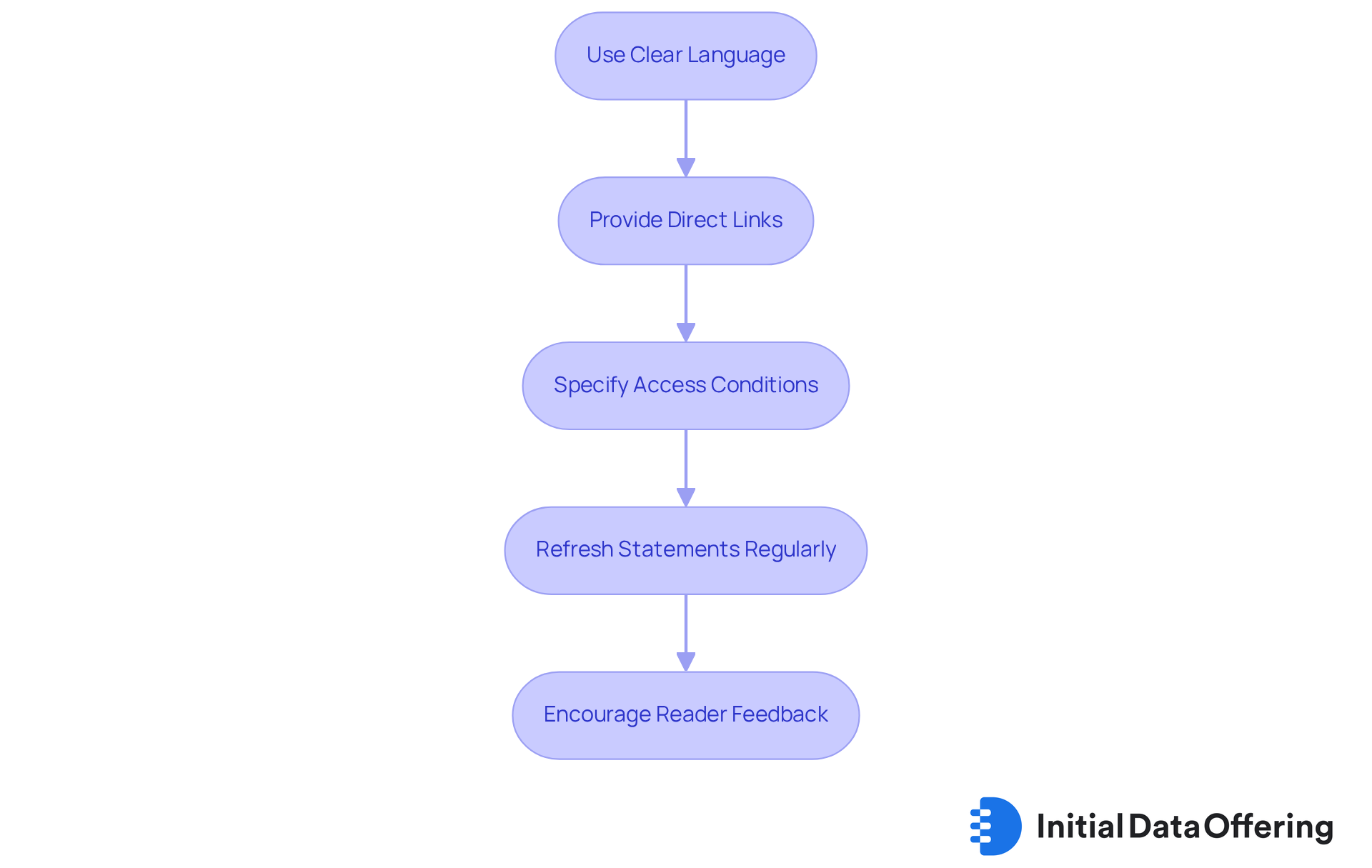4 Best Practices for Effective Data Research Management

4 Best Practices for Effective Data Research Management
Overview
The article delineates four best practices for effective data research management:
- Developing a comprehensive data management plan
- Preparing data according to ethical standards
- Utilizing repositories for data sharing
- Incorporating data availability statements in research articles
Each practice underscores the features of organization, ethical considerations, and accessibility. These practices not only enhance research efficiency and credibility but also foster collaboration and transparency within the research community.
How can these best practices be integrated into your own research efforts? By adopting a structured approach, researchers can significantly improve their data management strategies, ultimately benefiting their work and the broader research landscape.
Introduction
Effective data management serves as the backbone of successful research. Many researchers encounter challenges when navigating the complexities of organizing, sharing, and ethically handling their data. By implementing best practices in data research management, scholars can enhance their efficiency and ensure the integrity of their findings. However, with the ever-evolving landscape of data ethics and accessibility, researchers must consider how to stay ahead. How can they effectively manage their data while fostering collaboration and compliance?
Develop a Comprehensive Data Management Plan
Creating a comprehensive data research management plan involves several key components that are essential for effective information handling.
-
Define Objectives: Clearly outline the aims of your information exploration. What inquiries do you seek to address? What kind of information is required? Establishing these objectives sets the foundation for your research efforts.
-
Information Gathering Techniques: Specify how information will be collected. Will you utilize surveys, experiments, or secondary sources? It is crucial to ensure that your chosen methods align with your research objectives, maximizing the relevance and quality of the data research collected.
-
Information Storage Solutions: Select suitable storage options that guarantee both the security and accessibility of information. Consider cloud storage solutions that not only facilitate collaboration but also provide a reliable platform for data management.
-
Information Documentation: Maintain thorough documentation of your information sources, methodologies, and any transformations applied to the data. This transparency is vital for reproducibility and enhances the credibility of your data research.
-
Review and Update: Regularly assess and revise your management plan to adapt to new findings or changes in research direction. This flexibility can lead to improved information management and deeper insights.
By implementing a comprehensive information management plan, researchers can enhance their efficiency. This ensures that their records are well-organized and readily available for analysis, ultimately contributing to more effective research outcomes.

Prepare Data According to Ethical Standards
To prepare data ethically, it is essential to consider several key practices that enhance both the integrity of data research and the protection of participants.
-
Informed Consent is paramount; ensuring that participants are fully informed about how their information will be utilized is crucial. Obtaining their consent before data collection fosters trust and transparency.
-
Anonymization is another critical practice. Where feasible, masking information safeguards the identities of individuals participating in the study, particularly in sensitive research contexts. This practice not only protects privacy but also enhances the reliability of the findings.
-
Information Minimization involves gathering only the data necessary for your research objectives. By avoiding the collection of excessive information, researchers can mitigate privacy risks and focus on data research that supports their studies.
-
Adherence to Regulations is vital. Familiarizing yourself with applicable privacy protection regulations, such as GDPR or HIPAA, ensures that your practices align with legal standards, thereby enhancing the legitimacy of your research.
-
Regular Training for all team members involved in information handling is essential. Ongoing education ensures that everyone understands ethical standards and best practices, fostering a culture of responsibility and compliance.
By adhering to these ethical standards, researchers in data research not only safeguard the rights of participants but also enhance the credibility of their findings, ultimately contributing to the advancement of knowledge in their fields.

Utilize Repositories for Data Sharing and Accessibility
To effectively utilize repositories for data sharing, it is essential to follow these guidelines:
-
Select Suitable Repositories: Choosing repositories that align with your area of study is crucial. A strong reputation for information integrity and accessibility ensures that your data research reaches the right audience effectively.
-
Metadata Standards: Comprehensive metadata accompanying your datasets is vital. This metadata should describe the context, structure, and usage rights of the information, significantly enhancing discoverability for other researchers involved in data research.
-
Version Control: Implementing version control for datasets allows you to track changes and updates over time. This practice not only preserves the integrity of the information but also facilitates collaboration among researchers.
-
Connect with the Community: Actively participating in the project community can greatly enhance your research experience. By sharing insights, responding to queries, and collaborating with other scholars, you contribute to a richer academic environment.
-
Promote Your Datasets: Utilizing social media and academic networks to promote your datasets is essential. This increases their visibility and encourages others to utilize them, fostering a culture of sharing and collaboration.
By utilizing repositories, researchers can significantly enhance the accessibility of their data research information. This not only fosters collaboration but also drives innovation within their respective fields. How might these practices apply to your own research efforts?

Incorporate Data Availability Statements in Research Articles
To effectively incorporate data availability statements, it is essential to consider several key features that enhance their clarity and accessibility. First, employing clear and concise language is crucial; this ensures that readers understand where and how to access the information without being hindered by jargon. Additionally, providing direct links to the locations where the information is stored allows for easy navigation, facilitating access to datasets.
Next, it is important to specify any conditions for accessing the information. Clearly outlining licensing agreements or restrictions on use helps set expectations for the audience. Regularly refreshing the availability statement is also vital; this practice ensures that any changes in access or repository status are accurately reflected, maintaining transparency.
Finally, encouraging feedback from readers can significantly improve the clarity and effectiveness of the availability statement. By inviting thoughts and suggestions, researchers can enhance accessibility in future studies. Incorporating data availability statements not only bolsters the transparency of data research efforts but also fosters collaboration and further exploration within various fields.

Conclusion
Implementing effective data research management practices is essential for achieving reliable and impactful research outcomes. By developing comprehensive data management plans, adhering to ethical standards, utilizing repositories for data sharing, and incorporating clear data availability statements, researchers can significantly enhance the integrity and accessibility of their work.
The article outlines several key practices:
- Defining research objectives
- Employing effective information gathering techniques
- Ensuring ethical data handling
- Promoting datasets through suitable repositories
Each of these elements plays a crucial role in organizing and securing data while fostering collaboration and transparency within the research community.
Ultimately, embracing these best practices in data research management is not merely about improving individual projects; it contributes to a culture of responsible research that values ethical considerations and data sharing. By adopting these strategies, researchers can pave the way for innovative discoveries, ensuring that their findings are accessible and beneficial to a broader audience. Engaging with these practices today can lead to a more robust and credible research landscape in the future.
Frequently Asked Questions
What is the purpose of a comprehensive data management plan?
A comprehensive data management plan is designed to enhance the efficiency of information handling in research, ensuring that records are well-organized and readily available for analysis.
What are the key components of a data management plan?
The key components include defining objectives, specifying information gathering techniques, selecting information storage solutions, maintaining documentation, and regularly reviewing and updating the plan.
How should objectives be defined in a data management plan?
Objectives should clearly outline the aims of the information exploration, including the inquiries to be addressed and the type of information required, which sets the foundation for research efforts.
What techniques can be used for gathering information?
Information can be collected using various techniques such as surveys, experiments, or secondary sources, ensuring that the chosen methods align with the research objectives.
What should be considered when selecting information storage solutions?
Suitable storage options should guarantee both security and accessibility of information, with cloud storage solutions being recommended for collaboration and reliable data management.
Why is documentation important in a data management plan?
Thorough documentation of information sources, methodologies, and transformations applied to the data is vital for transparency, reproducibility, and enhancing the credibility of the data research.
How often should a data management plan be reviewed and updated?
A data management plan should be regularly assessed and revised to adapt to new findings or changes in research direction, which can lead to improved information management and deeper insights.